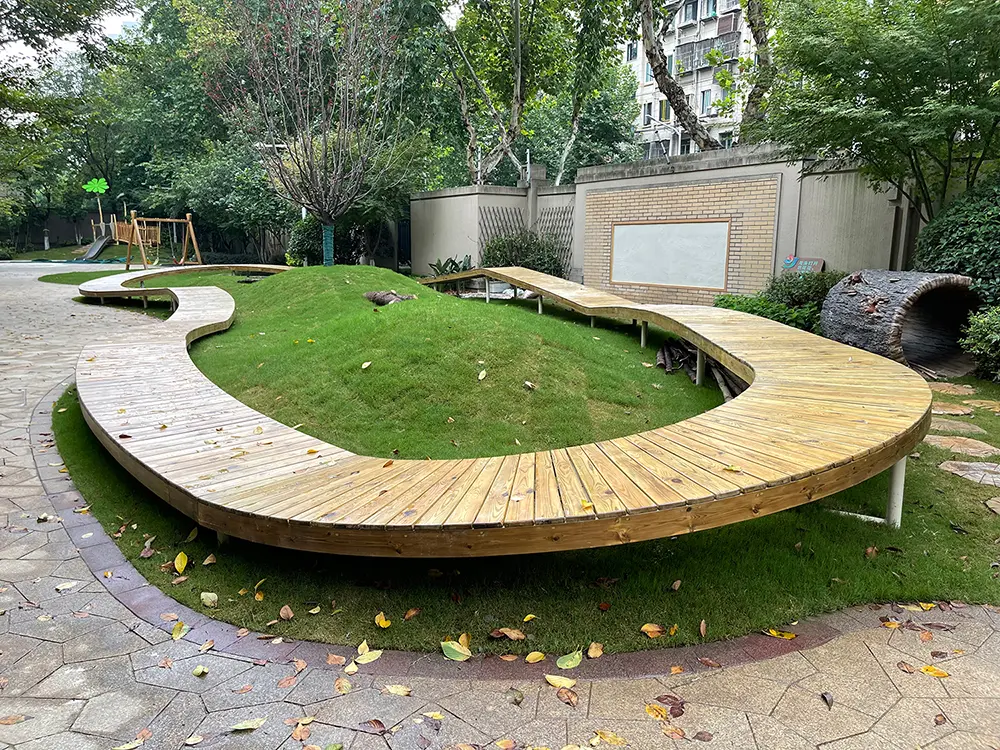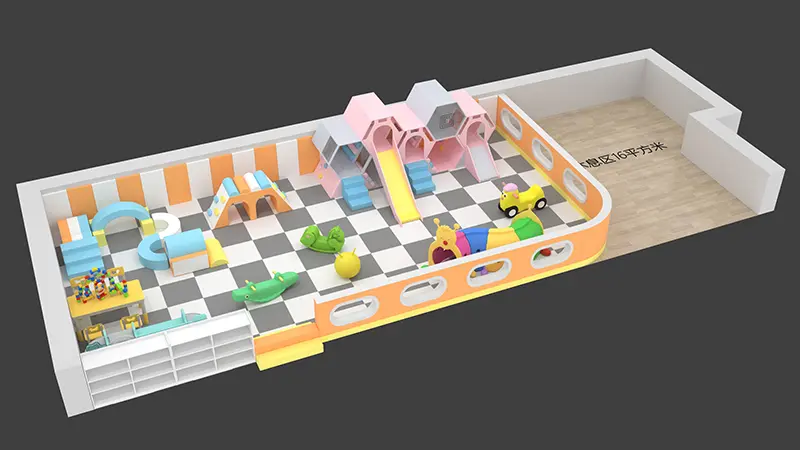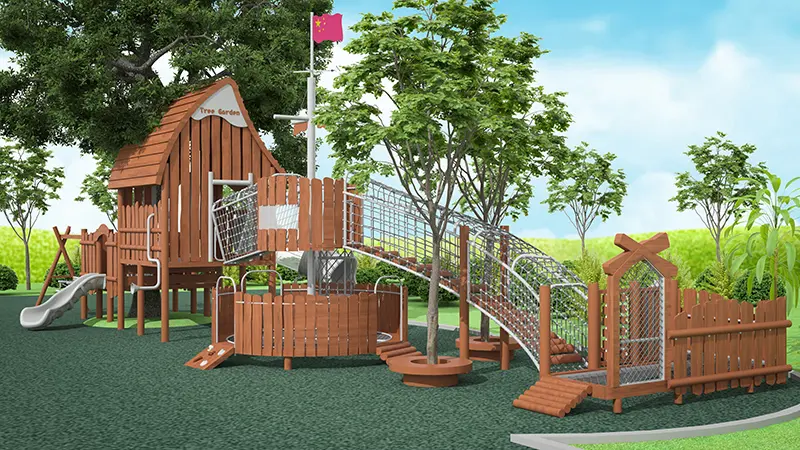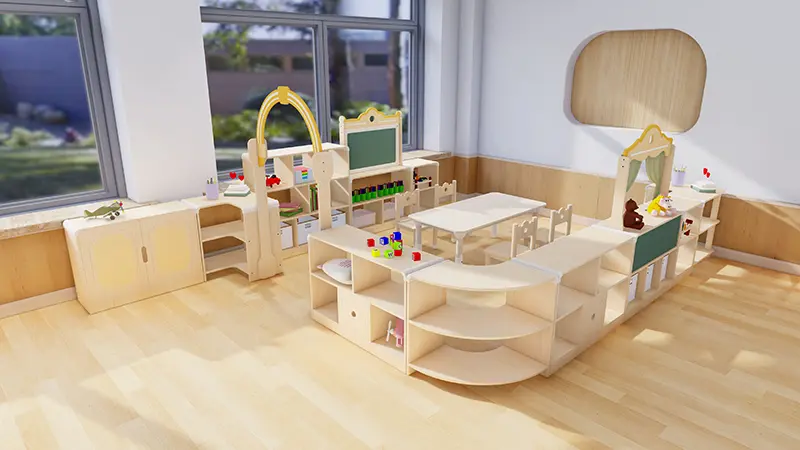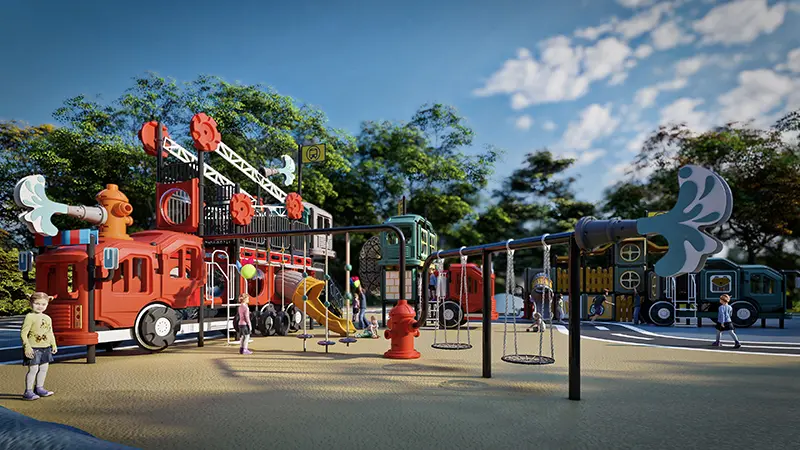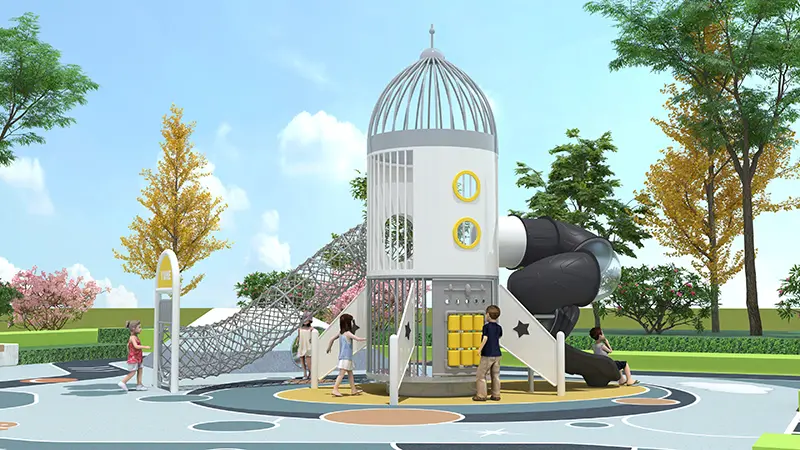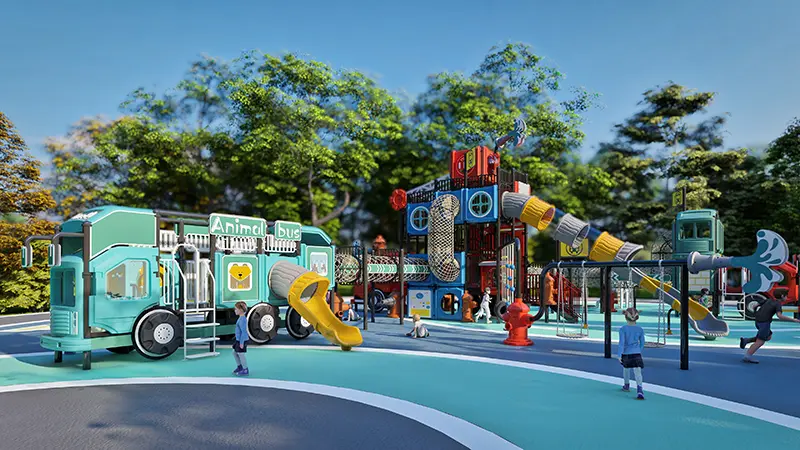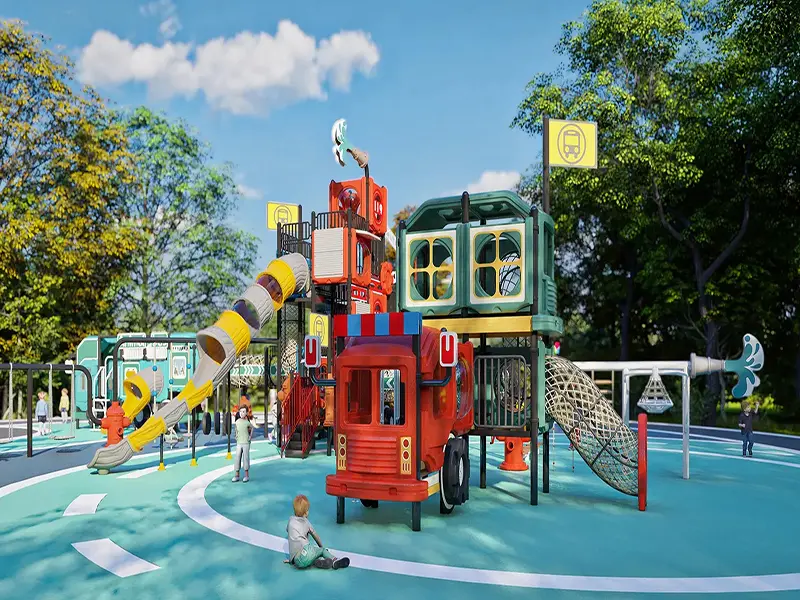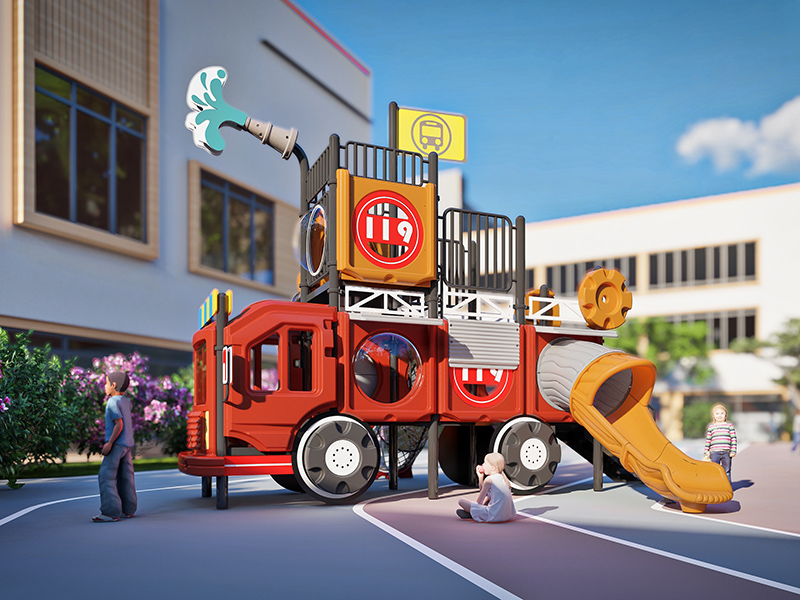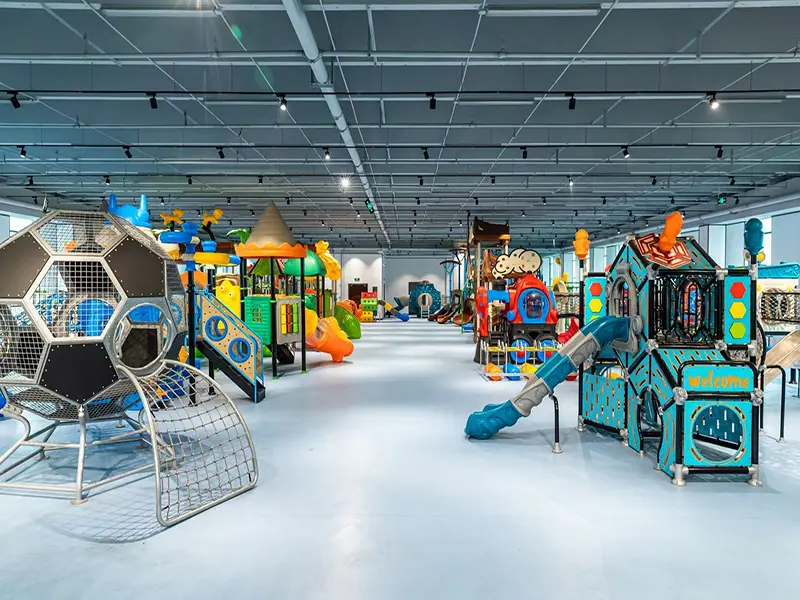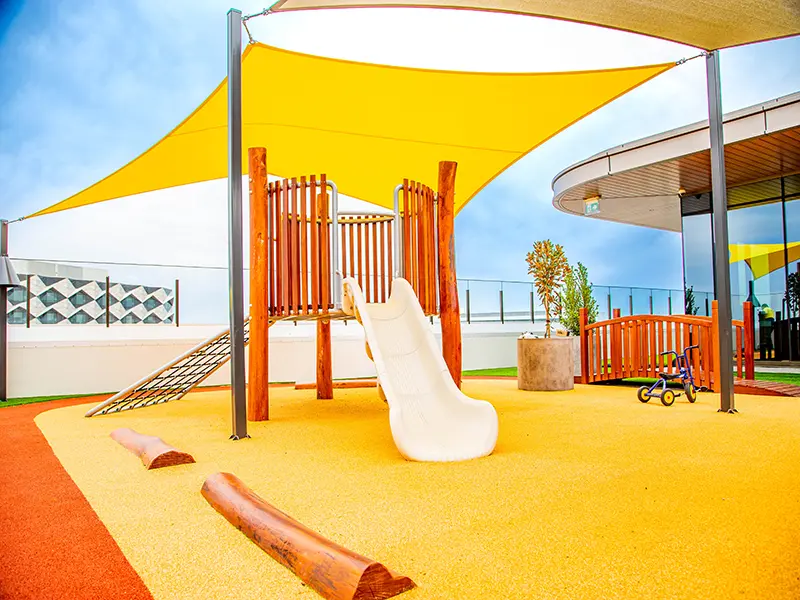 +86-13901441113
+86-13901441113 Outdoor Playground Equipment Material Guide: Engineering Plastic vs. Wooden Slides
As urban communities、schools and family-centric resorts prioritize outdoor play spaces, composite slideshave become a cornerstone of Modern Playgrounds. However, the choice between engineering plastics and solid wood materials significantly impacts safety, lifecycle costs, and environmental footprint. This article breaks down the pros, cons, and ideal use cases for both options, empowering buyers and facility managers to make informed decisions.
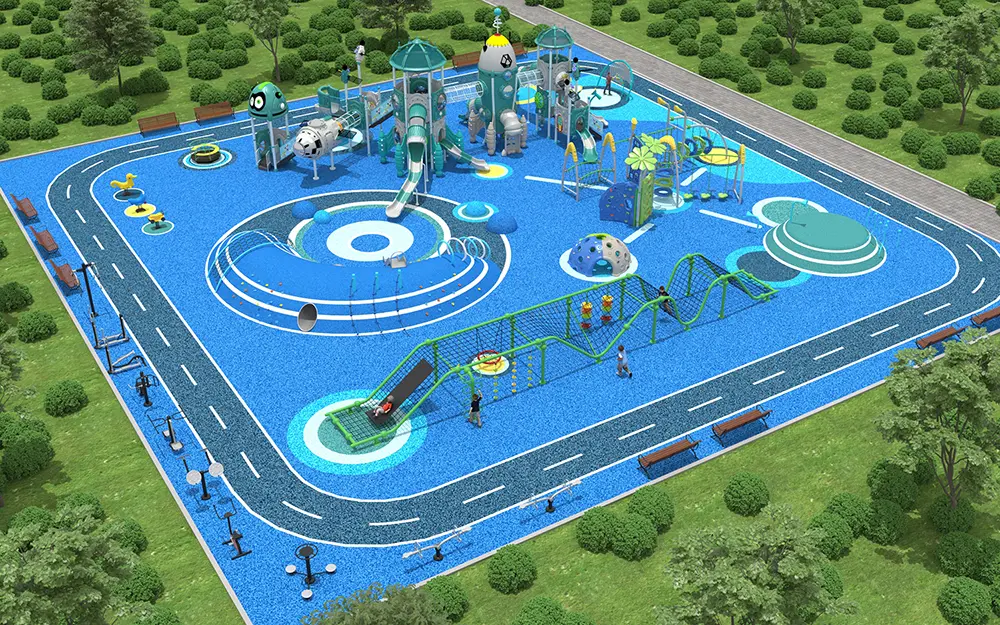
Engineering Plastic Slides: High-Performance Innovation for Modern Playgrounds
Material Profile: High-density polyethylene (HDPE) , enhanced with UV stabilizers and anti-static additives.
Key Advantages:
Child Safety: Smooth, burr-free surfaces with controlled friction reduce abrasion risks. Superior impact absorption compared to wood minimizes injury potential.
All-Weather Durability: Resists corrosion, moisture, and UV damage. Stable in extreme temperatures ,Relatively long lifespan.
Low Maintenance: No painting or sealing required. Clean with water and mild detergent.
Design Versatility: Customizable colors and shapes (spiral tubes, themed tunnels) .
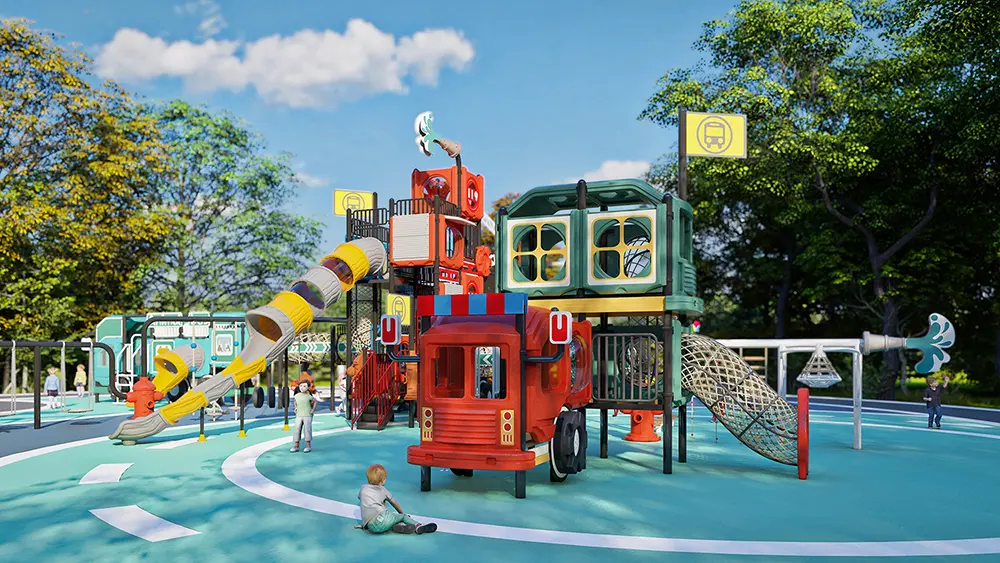
Limitations:
Thermal expansion in direct sunlight (requires expansion joints in design).
The cost investment for developing rotational molding tools is relatively high。
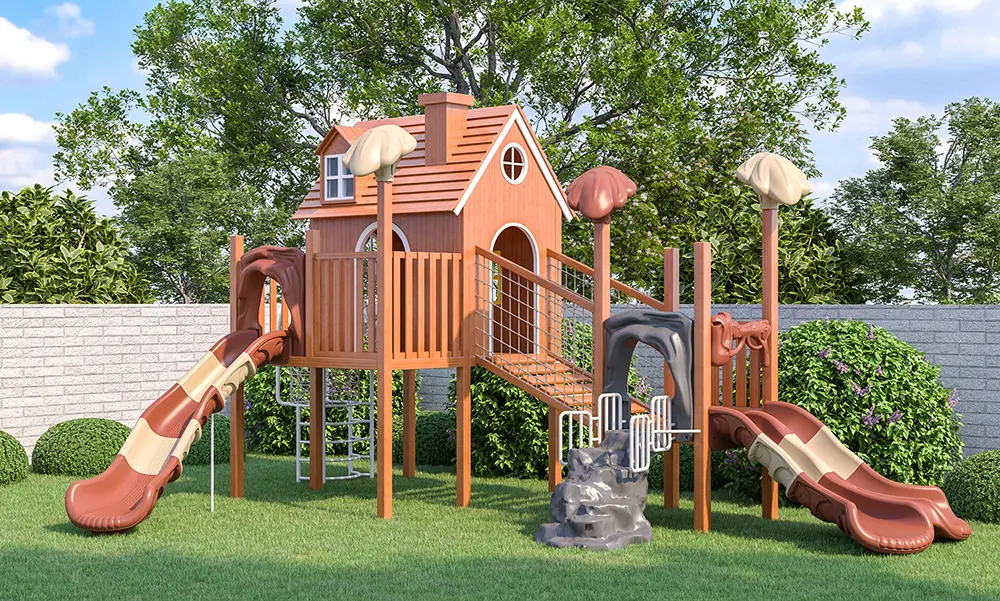
Wooden Slides: Natural Aesthetics Meet Eco-Friendly Values
Material Profile:Conventional solid woods include eucalyptus, pine, etc,Polishing and painting will be carried out in the later stage。
Key Advantages:
natural design : Blends seamlessly with natural surroundings, ideal for parks, eco-resorts, or Montessori-style play areas.
Natural design: The natural wooden shape closely resembles nature, making children feel as if they are immersed in nature
Challenges:
High Maintenance:Annual maintenance, surface polishing, and painting are required to address natural cracking and prevent damage from mold or insects
Safety Trade-offs: Harder surfaces increase bruising risks for toddlers; poor weather resistance in humid climates.
Shorter Lifespan: Typically 4-6 years, even with diligent upkeep.
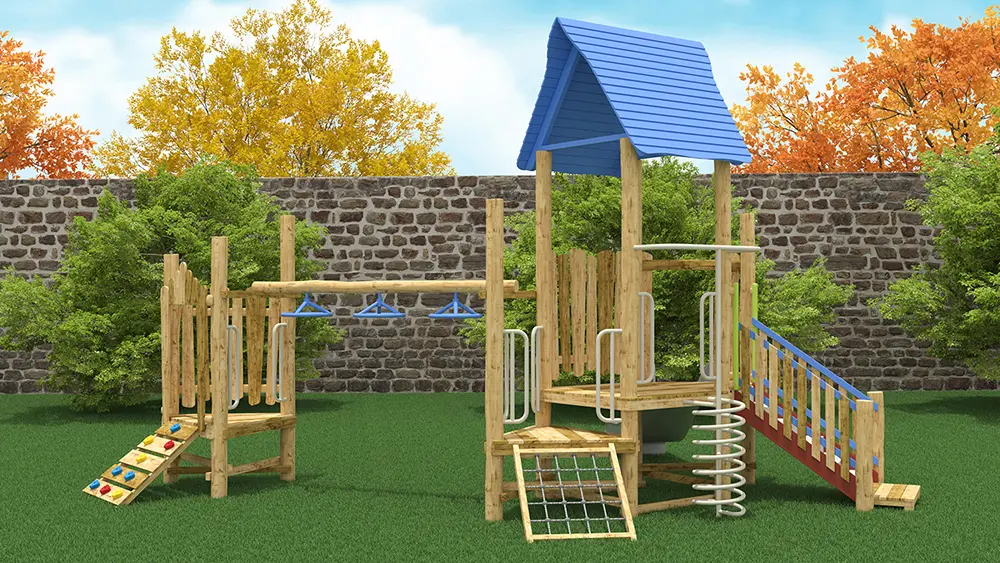
Conclusion:
Choosing between plastic and wooden slides hinges on prioritizing durability, safety, or environmental values. While engineering plastics lead in practicality, wooden options appeal tomarkets seeking organic aesthetics. As material science advances,the future of playgrounds promises to unite innovation with planetary responsibility.
If you don't know how to choose yet, please contact us and we will provide you with a suitable amusement park solution
